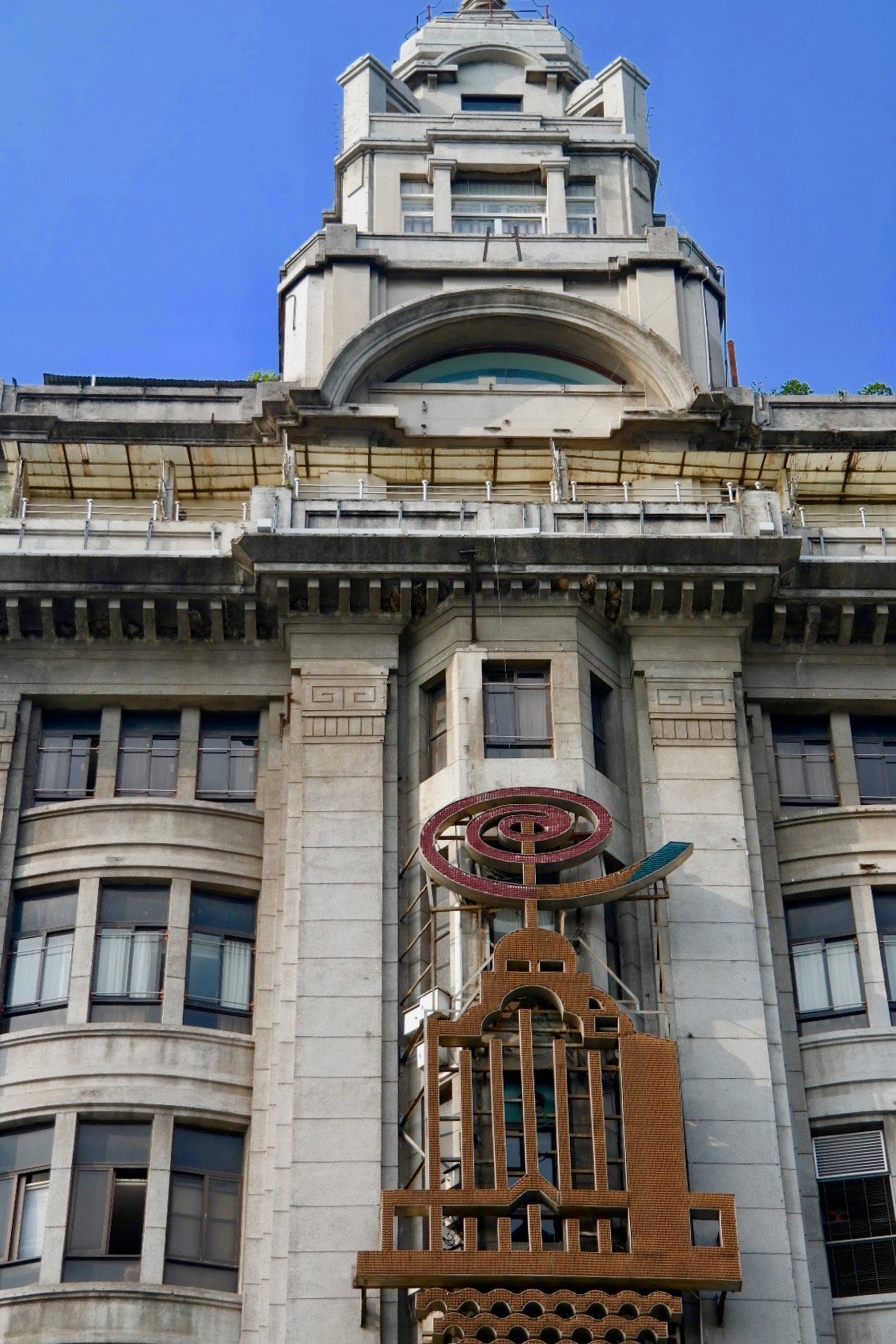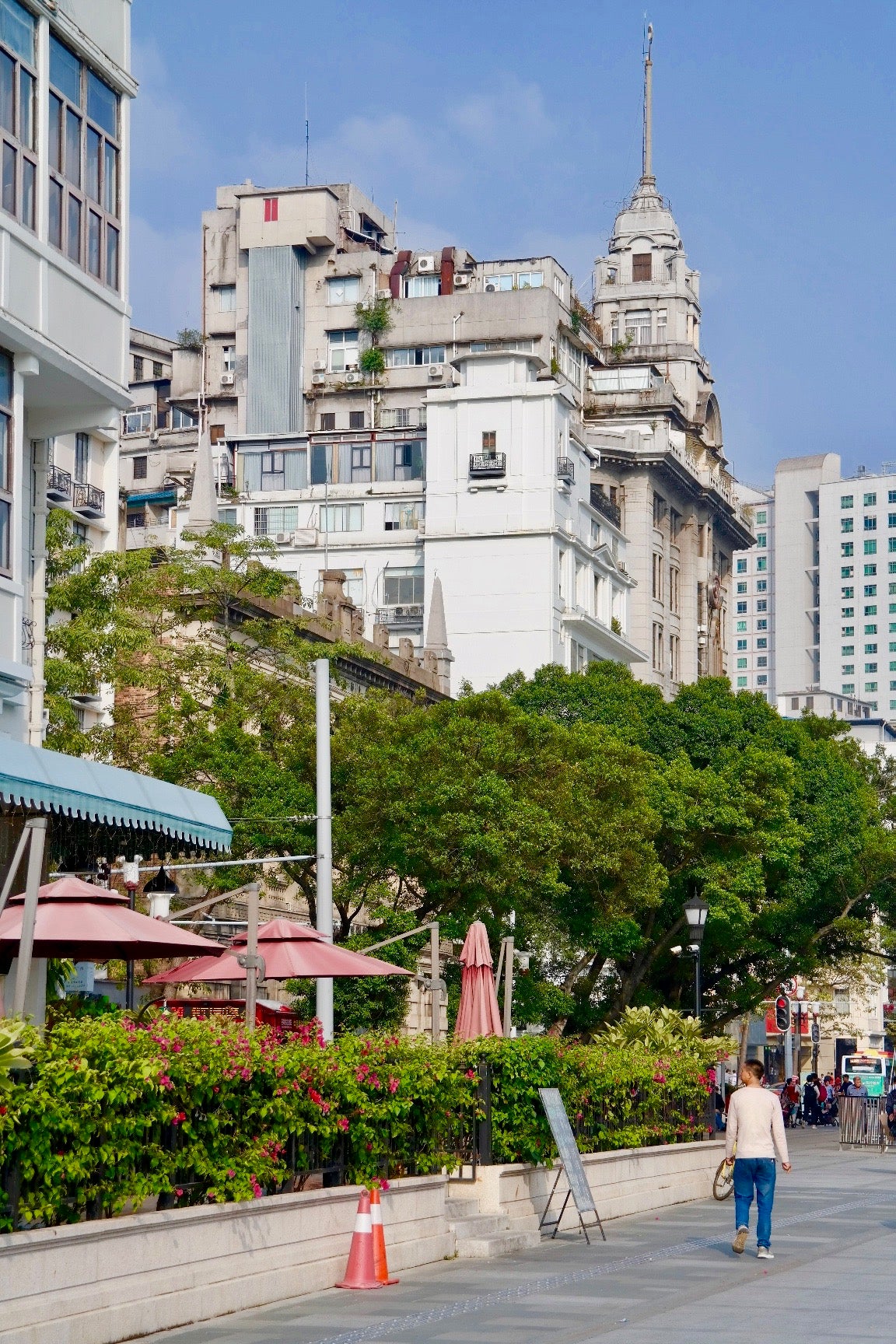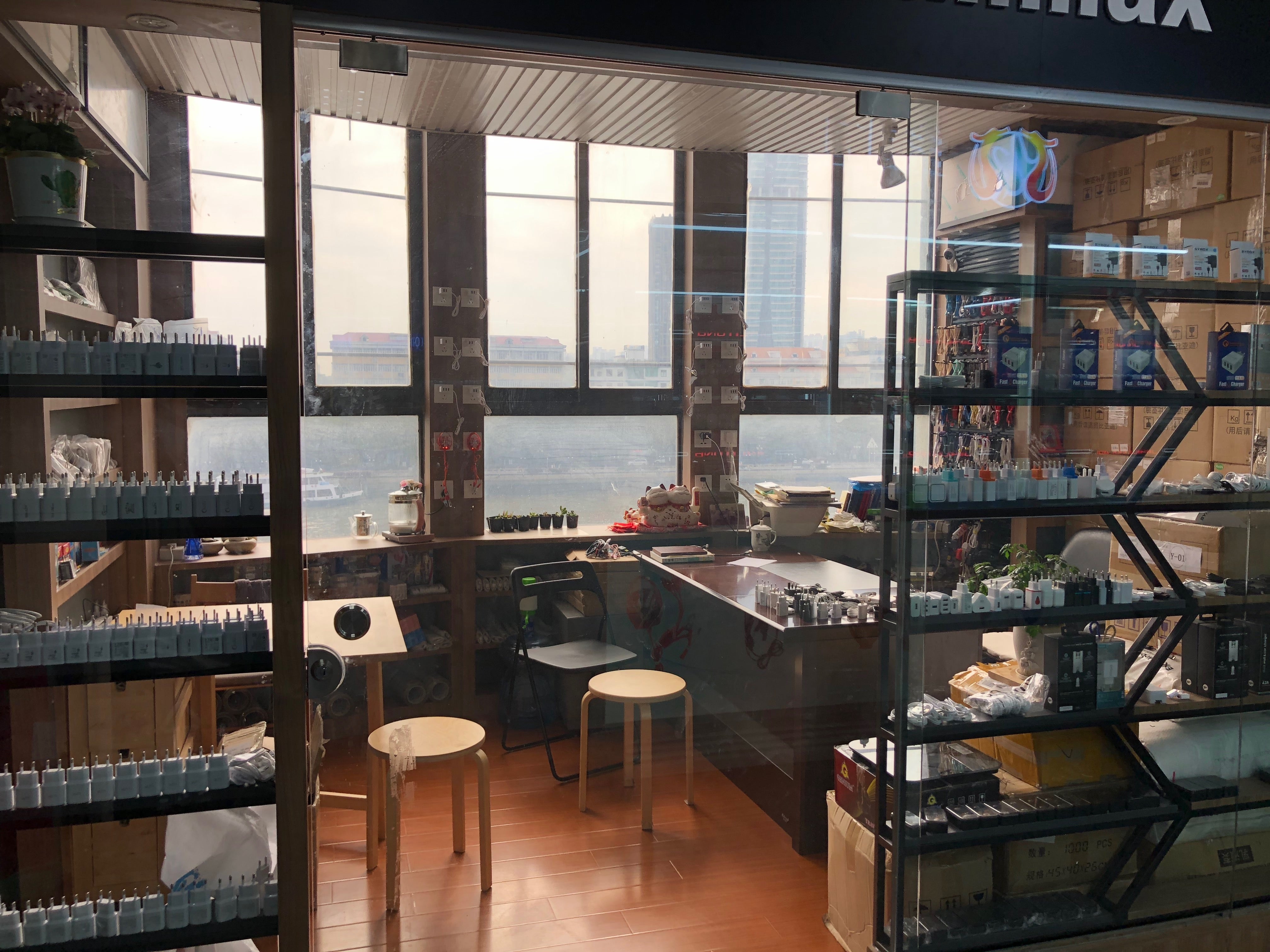
Da Sun building, Guangzhou
Chong Choy was born in the Waisha village, Zhongshan, in 1877 and migrated to Australia with his brother, Hing Choy, in 1891. After working in Sydney for several years in the fruit and vegetable trade he returned to China, basing himself in Hong Kong where he served as one of the directors and co-founders of the Sincere Company, famous for its department stores in Hong Kong and Shanghai. Partly with funds raised for him by Hing Choy, in 1912 he founded his own department store chain, the first store opening in 1912 on De Voeux Road, Hong Kong.
In 1918, Chong Choy opened the 12 storey Xidi Da Sun building on the Canton (Guangzhou) waterfront which housed a department store, hotel, Western-style restaurant and an amusement parlour. It was the first reinforced concrete high-rise building in the city. This strip of riverfront, known as the ‘bund’, had some of the city’s most prominent buildings prior to the 1980s.

The Da Sun building in the early 20th century. Sampans are shown in the river immediately in front of the building (photo courtesy of Guangzhou Archives)
‘The building had four elevators, power generators, and a parking lot on the fourth floor. It was the most magnificent and luxuriant department store in South China. Out-of-town visitors took it a must to go shopping at Da Sun’ (http://www.cityofzhuhai.com/2019-02/20/c_337067.htm).

The building in 2018

The entrance archway
The Da Sun building is 300 metres downriver from Shamian Island which in 1859, following the Opium Wars, was granted as a concession to Britain and France as a base for its their trading companies.

Map showing the building’s location on the Guangzhou riverfront. Shamian Island, formerly an enclave of Western trading companies, is shown to the west
A fire destroyed the interior of the building during the Japanese invasion of Guangdong in 1938. After the founding of the Peoples Republic in 1949 the building was restored, reopening in 1954 under the name Nanfang Mansion. Today the building is well known for the dozens of electronics retailers and wholesalers who occupy small spaces there. In recent years additional land has been reclaimed on this strip of Guangzhou’s riverfront to create a broad promenade.

A view of the building from the west.

A café on an upper level overlooking the river. Note the bow window, a feature of the building’s façade
In heritage terms, the fact that this building has survived while all the original department store buildings in Hong Kong have been demolished adds to its significance.

A heritage plaque erected on the building in 2010. It records that it was the ‘first reinforced concrete high-rise building in Guangzhou’ and that after the fire of 1938 it was restored in 1954 with funding from the Guangzhou Municipality.
